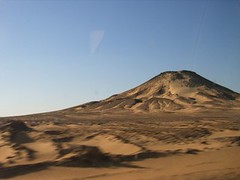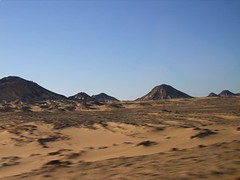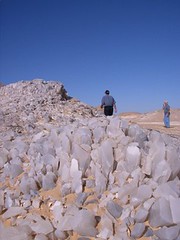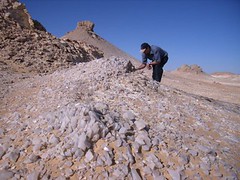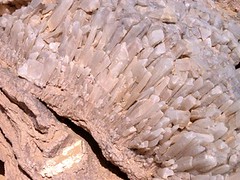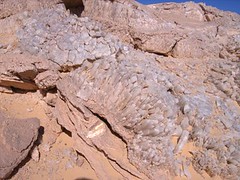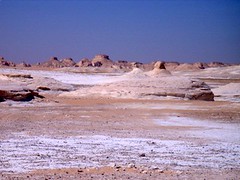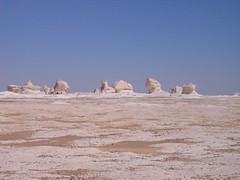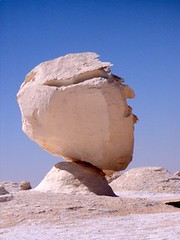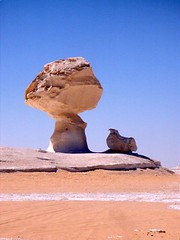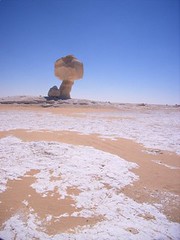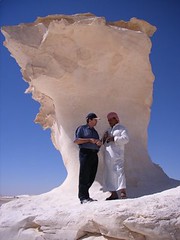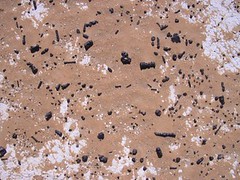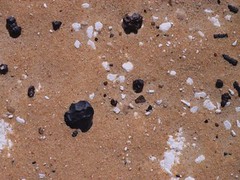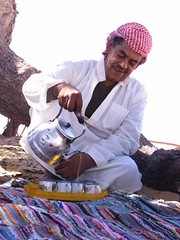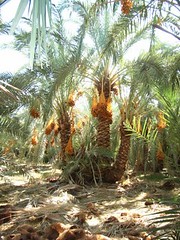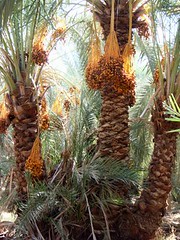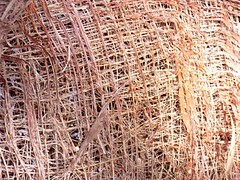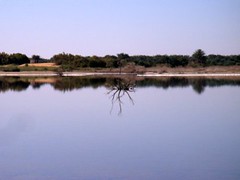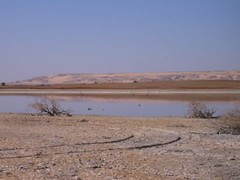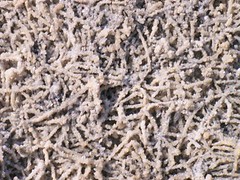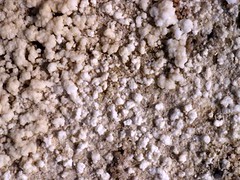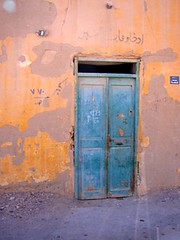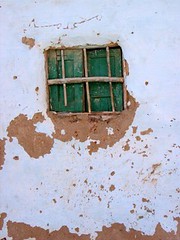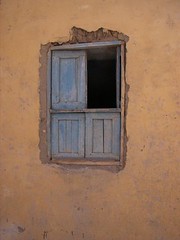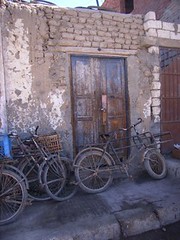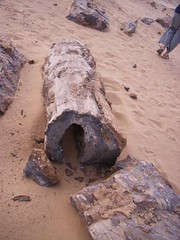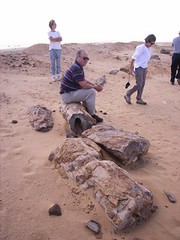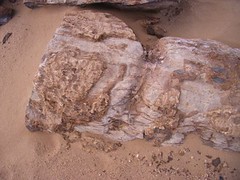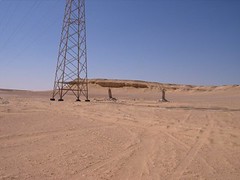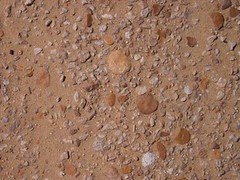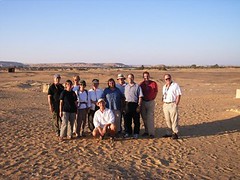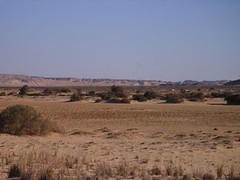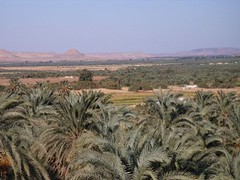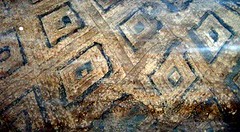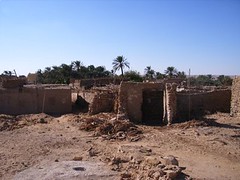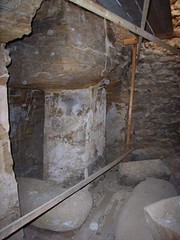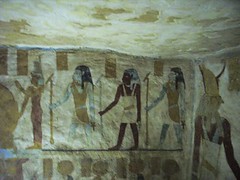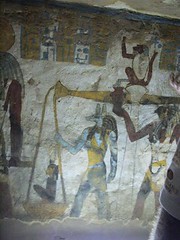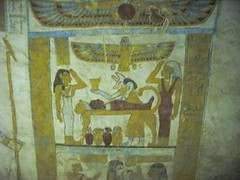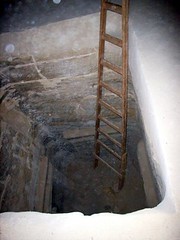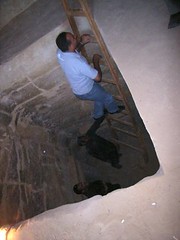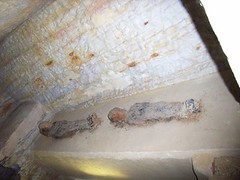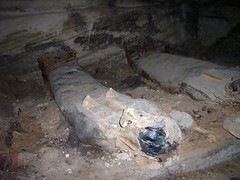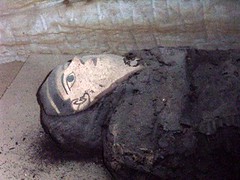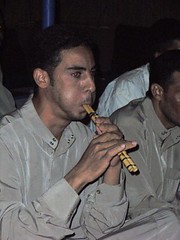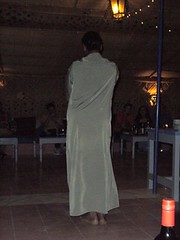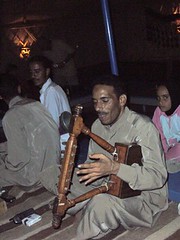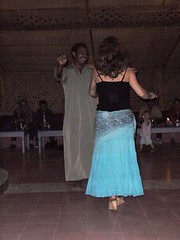Dyeing, and Remembrance
I walked a friend around one of my favourite circuits the other day. This is the walk around the Tentmaker’s Souq.
I was picked up by an urger some time ago and taken into an old khan to watch men dyeing silks –which I think are rayons. I know I have put up pictures of this place before – but the colours they were working with were different and really stunning against the somewhat drab and dilapidated interior of the building. I have worked out that this place is Christian – it is not hard to make a deduction like this when the place is closed on Sunday and open at 1.00 pm on a Friday!
I also managed to get a look at the plastic bins with dyes in them as they were measuring them out.
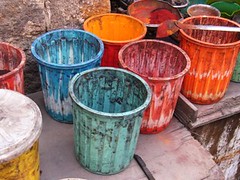
I have a lot of photos but might just let you look at all of them this time, as the blogs have been a bit light lately. The more interesting things I do the less time I have to write them up!
Click on the photos below to view a whole set of shots from the Tentmakers' Souq.
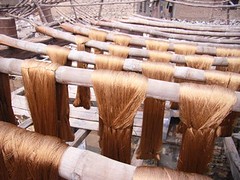
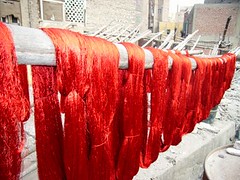
We moved on into the Tentmakers’ Souq and could hear a racket up ahead with a strangely squeaky voice. It was a one-man puppet show. Like shows around the world he was surrounded by fascinated children and laughing faces. It was amazingly like Punch and Judy – even to a ‘hitting Judy with a stick’ scene. I was reliably told that it was very funny, even for adults.
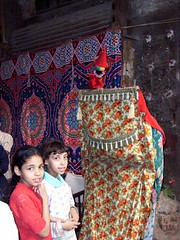
The man who ran it actually wore the theatre like a cloak with a square mounting which must have sat on his head. The puppets appeared above this. He emerged later – a bluff and older man with deeply creased laugh lines and wild grey hair – probably not helped by having a theatre rubbing the top of his head. I didn’t photograph him – I had no small money with me and was already worrying about how to do the taxi! Local taxis never have change. Not even when you have just seen them given fistfuls. Obviously it disappears into thin air.
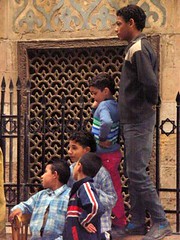
We have just had a busy day up at El Alamein. It was the Anniversary of the Battle of El Alamein – the last of the three which clinched the victory of the Eighth Army over the German and Italian forces back across North Africa to Tunisia, where they were finally defeated in 1943. After this victory the Allies never lost another major battle of the Second World War. It was, in a way, the beginning of the end.
It was especially poignant because all the groups were celebrating – the Greeks, the Italians, and the Germans as well as the Commonwealth. We did not attend the Germans’ memorial, but all of us seemed to converge on the Commonwealth and Italian commemorations. It was very comforting somehow to have people from both sides of the battle commemorating all the dead together. It was extremely windy. Winter is on its way and it almost threatened rain several times.
Many veterans came – also from both sides. Elderly women and men sat in front of me and I watched with a lump in my throat as one woman wiped away surreptitious tears. She carried a bunch of fabric poppies with the black centres, tied with a note attached saying “For my dear brother, because I will never forget you”. When people were invited to lay their own wreaths she stayed where she was. Later, I saw her move forward painfully, leaning heavily on a stick but otherwise unaided, to put the small posy on the Stone of Remembrance.
While many wreaths were artificial poppies, there were some with real flowers. The petals danced, red carnation and rose petals around our feet, and streamed in tiny droplets on the wind, banking against the feet of nearby grave markers like drops of blood. It is hard not to feel emotional in such a place - there is such a sense of sadness and waste in the long rows of crosses. A solitary bugle played Taps, and Reveille, and that marvellous piece which goes “They will not grow old as we that are left grow old ...
In El Alamein there is no real attempt to grow western style flowers and lawn. It is a desert garden – of small dry bushes and thorn trees, and bougainvillaea with its flamboyant colour. It is beautiful in its own way.
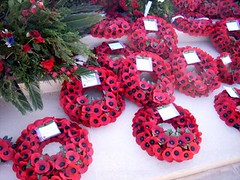
In the Italian service they had a choir and the voices were marvellous. I loved the feathers in the hats of the soldiers of the military band – with long coppery rooster feathers that must have been an infernal nuisance when trying to play wind instruments in the wind! I wonder how often they found themselves with mouthfuls of feather! The sun was setting and I had to rush as our car was holding up others – so only a couple of photographs.
Click on the photo below to view more from El Alamein.
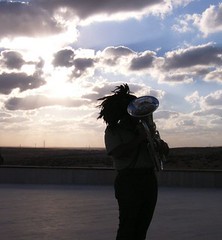
I was picked up by an urger some time ago and taken into an old khan to watch men dyeing silks –which I think are rayons. I know I have put up pictures of this place before – but the colours they were working with were different and really stunning against the somewhat drab and dilapidated interior of the building. I have worked out that this place is Christian – it is not hard to make a deduction like this when the place is closed on Sunday and open at 1.00 pm on a Friday!
I also managed to get a look at the plastic bins with dyes in them as they were measuring them out.

I have a lot of photos but might just let you look at all of them this time, as the blogs have been a bit light lately. The more interesting things I do the less time I have to write them up!
Click on the photos below to view a whole set of shots from the Tentmakers' Souq.


We moved on into the Tentmakers’ Souq and could hear a racket up ahead with a strangely squeaky voice. It was a one-man puppet show. Like shows around the world he was surrounded by fascinated children and laughing faces. It was amazingly like Punch and Judy – even to a ‘hitting Judy with a stick’ scene. I was reliably told that it was very funny, even for adults.

The man who ran it actually wore the theatre like a cloak with a square mounting which must have sat on his head. The puppets appeared above this. He emerged later – a bluff and older man with deeply creased laugh lines and wild grey hair – probably not helped by having a theatre rubbing the top of his head. I didn’t photograph him – I had no small money with me and was already worrying about how to do the taxi! Local taxis never have change. Not even when you have just seen them given fistfuls. Obviously it disappears into thin air.

We have just had a busy day up at El Alamein. It was the Anniversary of the Battle of El Alamein – the last of the three which clinched the victory of the Eighth Army over the German and Italian forces back across North Africa to Tunisia, where they were finally defeated in 1943. After this victory the Allies never lost another major battle of the Second World War. It was, in a way, the beginning of the end.
It was especially poignant because all the groups were celebrating – the Greeks, the Italians, and the Germans as well as the Commonwealth. We did not attend the Germans’ memorial, but all of us seemed to converge on the Commonwealth and Italian commemorations. It was very comforting somehow to have people from both sides of the battle commemorating all the dead together. It was extremely windy. Winter is on its way and it almost threatened rain several times.
Many veterans came – also from both sides. Elderly women and men sat in front of me and I watched with a lump in my throat as one woman wiped away surreptitious tears. She carried a bunch of fabric poppies with the black centres, tied with a note attached saying “For my dear brother, because I will never forget you”. When people were invited to lay their own wreaths she stayed where she was. Later, I saw her move forward painfully, leaning heavily on a stick but otherwise unaided, to put the small posy on the Stone of Remembrance.
While many wreaths were artificial poppies, there were some with real flowers. The petals danced, red carnation and rose petals around our feet, and streamed in tiny droplets on the wind, banking against the feet of nearby grave markers like drops of blood. It is hard not to feel emotional in such a place - there is such a sense of sadness and waste in the long rows of crosses. A solitary bugle played Taps, and Reveille, and that marvellous piece which goes “They will not grow old as we that are left grow old ...
In El Alamein there is no real attempt to grow western style flowers and lawn. It is a desert garden – of small dry bushes and thorn trees, and bougainvillaea with its flamboyant colour. It is beautiful in its own way.

In the Italian service they had a choir and the voices were marvellous. I loved the feathers in the hats of the soldiers of the military band – with long coppery rooster feathers that must have been an infernal nuisance when trying to play wind instruments in the wind! I wonder how often they found themselves with mouthfuls of feather! The sun was setting and I had to rush as our car was holding up others – so only a couple of photographs.
Click on the photo below to view more from El Alamein.


